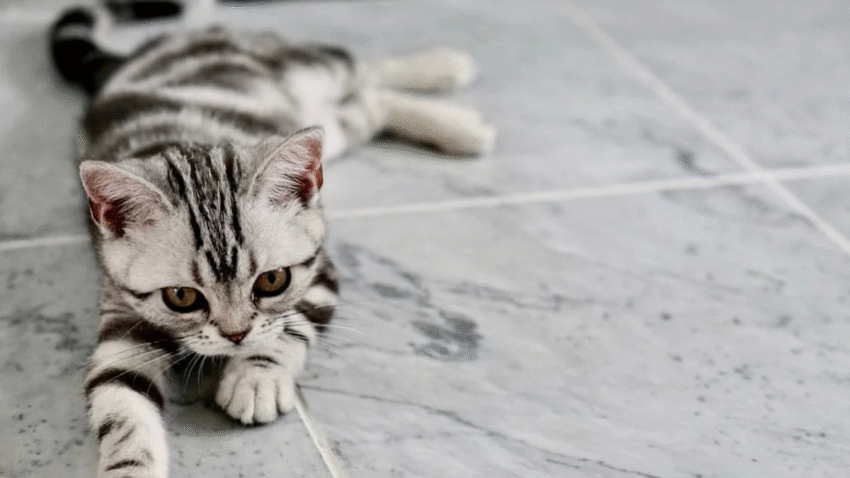Introduction
Want to feel closer to your cat and improve their behavior at the same time? Training isn’t just for tricks—it’s one of the best ways to build trust and connection. In this guide, you’ll learn how to build a strong bond with your cat through training, using positive reinforcement, daily interactions, and simple routines. Whether your cat is shy, playful, or independent, training can help you create a deeper relationship.
Why Training Builds Trust With Cats
Cats are often seen as independent animals, but they thrive on structure, communication, and mutual understanding—all of which training helps develop. When you train your cat, you create a positive feedback loop: your cat learns that paying attention to you leads to rewards, and you learn more about your cat’s personality, preferences, and needs.
Benefits of training include:
- Stronger bond and more affection
- Improved communication between you and your cat
- Reduced problem behaviors through redirection
- Mental stimulation and enrichment
- Increased confidence in shy or fearful cats
Training also shows your cat that you’re a consistent and rewarding presence in their life—key to building lasting trust.
Step-by-Step Guide to Bonding Through Cat Training
Step 1: Start With Positive Reinforcement
Cats respond best to reward-based training. This means offering a treat, toy, or praise immediately after they perform a desired behavior.
- Use small, high-value treats (like tuna flakes or freeze-dried chicken)
- Keep sessions short: 5–10 minutes, once or twice a day
- Use a consistent sound or clicker to mark the behavior you want
Never use punishment. Cats don’t respond to scolding or force—it damages trust and increases anxiety.
Step 2: Teach Simple Commands
Start with basic, easy-to-reward actions to build confidence and communication.
Easy starter tricks:
- “Sit” – Lure your cat with a treat over their head until they naturally sit, then reward
- “Come” – Call your cat’s name and reward when they approach
- “High five” – Gently tap their paw and reward when they lift it
Use the same word and reward immediately to help them associate the cue with the action.
Step 3: Make Training Part of Your Daily Routine
Consistency strengthens your bond and makes training second nature for both of you.
- Train before mealtimes when your cat is more motivated
- Use feeding times as a reward (e.g., ask for “sit” before placing the food bowl)
- Practice while playing or grooming to build positive associations
Integrating training into your daily interactions builds trust naturally over time.
Step 4: Read Your Cat’s Body Language
Bonding is about listening as much as teaching. Pay attention to your cat’s signals.
Signs your cat is engaged:
- Ears forward
- Tail up or gently swishing
- Focused eyes and alert posture
Signs your cat needs a break:
- Ears flat or twitching
- Tail lashing
- Avoiding eye contact or walking away
Respecting these cues shows your cat that you understand them—and that builds trust fast.
Step 5: Use Enrichment to Reinforce Your Connection
Training doesn’t have to be formal. Everyday enrichment activities are opportunities to build your bond.
Try:
- Puzzle feeders that encourage problem-solving
- Wand toys for interactive play
- Hide-and-seek games with treats
- Teaching tricks using toys instead of food if your cat prefers play
Make training feel like a fun game, not a chore, and your cat will look forward to the time together.
Common Mistakes to Avoid
- Using punishment or yelling
Cats don’t respond well to negative discipline. It breaks trust and causes fear-based behavior. - Inconsistent cues
If you use different words or hand signals, your cat will get confused. Be consistent with commands. - Training when your cat is tired or stressed
Pick calm moments when your cat is alert and interested—not after vet visits or right before bed. - Overloading with long sessions
Keep sessions short and focused. Cats have short attention spans and will tune out if overwhelmed. - Ignoring your cat’s preferences
Some cats prefer treats, others prefer toys or affection. Find what motivates your cat and use it wisely.
Extra Tips & Recommendations
- Use a clicker to speed up training—click at the exact moment your cat performs the behavior, then treat.
- End sessions on a high note with a successful trick and a big reward.
- Try trick training apps or video tutorials for new ideas and cues.
📘 Related article: Want more ways to train your cat? Read our guide on [How to Train Your Cat to Walk on a Leash] for a fun outdoor bonding challenge.
Conclusion
Training your cat is one of the best ways to build a strong, lasting bond. Through positive reinforcement, short daily sessions, and gentle communication, you’ll gain not only a well-behaved pet—but also a deeper, more trusting relationship.
Every moment you spend training is a moment of connection. Stay patient, be consistent, and have fun—your cat will thank you in purrs and affection.
